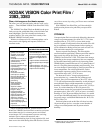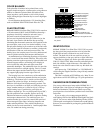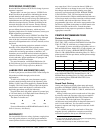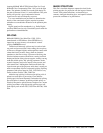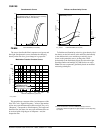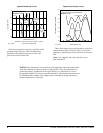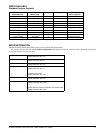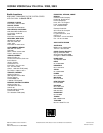
4 KODAK VISION Color Print Film / 2383, 3383 • H-1-2383t
inserting KODAK WRATTEN Gelatin Filter No.12 and
KODAK Color Compensating Filter 110 Cyan in the light
beam. The optimum variable-area sound-track density for
the print is between 0.8 and 1.1 (read at 800 nm). This print
density will provide a good compromise between
signal-to-noise ratio and frequency response.
Use cross-modulation test procedures to determine the
density of the sound-track negative required to produce
minimum cross-modulation distortion at the optimum print
density.
Digital sound-on-film soundtracks (e.g., Dolby Digital
and Sony SDDS) are dye only. Consult the system vendor for
performance recommendations.
SPLICING
KODAK VISION Color Print Film / 2383, 3383 is
manufactured on ESTAR base. Since ESTAR base is
impervious to most solvents, solvent-based “cement”
splicing CANNOT be used.
Thermal-weld ultrasonic splicers may be used on both
raw stock and processed film. After cutting, the two pieces
of film are overlapped slightly and brought into contact with
a horn that focuses acoustic energy from an ultrasonic
transducer to the film overlap. A pressure roller brings the
film into intimate contact with the horn, causing localized
heating and fusion of the polyester support, creating a strong
weld and reliable splice. Key splicing parameters are the
acoustic frequency and power output, roller pressure, and
roller transit time. Although the emulsion and back-side
layers become part of the polyester weld, there is usually no
need to scrape them off prior to ultrasonic splicing. Splicing
parameters and splicer setup for 2383, 3383 Film are very
similar to those used for 2386, 3386 Film.
Adhesive tape splicing is often used in splicing rolls of
printed raw stock prior to processing. Clear adhesive
splicing tape is the most frequently used method of splicing
processed prints in theatres, producing reliable splices on
relatively inexpensive splicers that are simple to use. Current
splicing procedures using high-quality splicing tapes will
work equally well on both 2383, 3383 Film and 2386, 3386
Film.
IMAGE STRUCTURE
This film’s excellent sharpness captures the detail in the
printing negative for projection onto the largest of theatre
screens. Fine-grained emulsions, an ultra-thin layer
structure, intragrain absorbing dyes, and superior halation
protection contribute to its performance.



